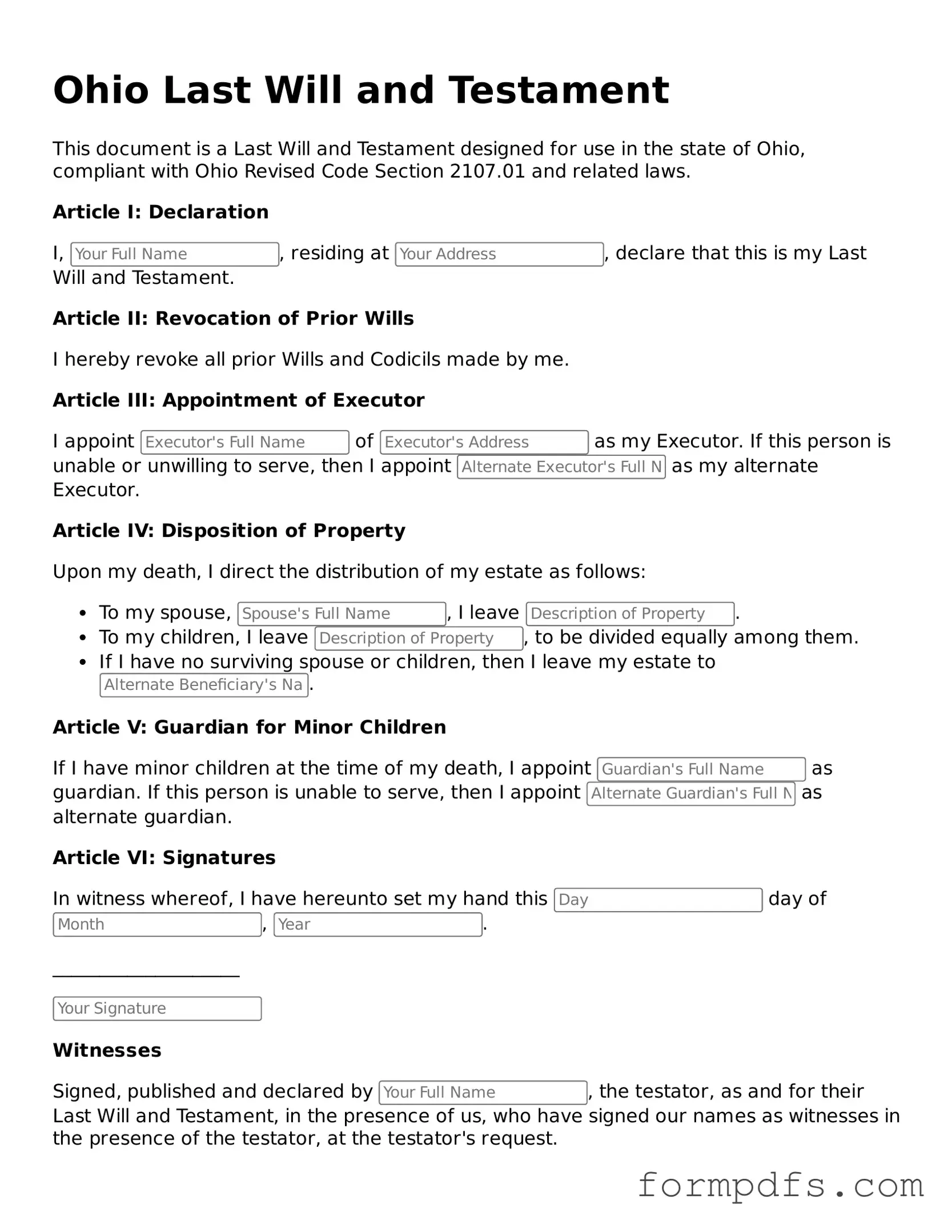What is a Last Will and Testament in Ohio?
A Last Will and Testament is a legal document that outlines how a person's assets and affairs should be handled after their death. In Ohio, this document allows individuals to specify their wishes regarding the distribution of property, the appointment of guardians for minor children, and the designation of an executor who will manage the estate. It is essential for ensuring that your wishes are honored and can help avoid potential disputes among family members.
Who can create a Last Will and Testament in Ohio?
In Ohio, any individual who is at least 18 years old and of sound mind can create a Last Will and Testament. This means that you must be able to understand the nature of the document and the implications of your decisions. It is advisable to seek guidance if you have complex assets or specific wishes that may require additional legal considerations.
Does a Last Will and Testament need to be notarized in Ohio?
While notarization is not strictly required for a Last Will and Testament to be valid in Ohio, it is highly recommended. Having the document notarized can help strengthen its validity and reduce the chances of challenges in court after your passing. Additionally, Ohio law allows for a "self-proving" will, which can simplify the probate process by allowing the will to be accepted without requiring witnesses to testify.
What happens if I die without a Last Will and Testament in Ohio?
If an individual passes away without a Last Will and Testament, they are considered to have died "intestate." In this situation, Ohio law dictates how the deceased's assets will be distributed. Typically, the estate will be divided among surviving relatives according to a predetermined order of priority. This can lead to outcomes that may not align with the deceased's wishes, making it crucial to have a will in place.
Can I change or revoke my Last Will and Testament in Ohio?
Yes, you can change or revoke your Last Will and Testament at any time while you are alive, as long as you are of sound mind. To make changes, you can create a new will or add a codicil, which is an amendment to the existing will. If you wish to revoke a will entirely, it is advisable to do so in writing and to destroy any copies of the old will to prevent confusion. Always ensure that your most current wishes are clearly documented.
